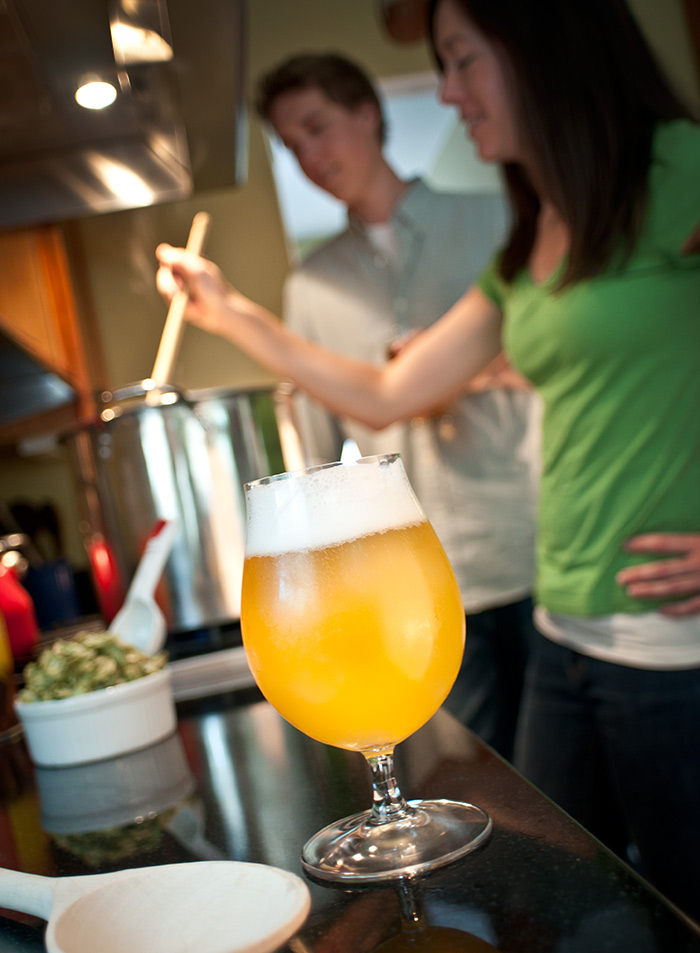1. Fresh Ingredients
 The importance of brewing with fresh ingredients cannot be overstated. The quality of homebrewed beer can only be as good as the quality of the ingredients going into the brew kettle.
The importance of brewing with fresh ingredients cannot be overstated. The quality of homebrewed beer can only be as good as the quality of the ingredients going into the brew kettle.
Because extract brewing consists of only malt extract (as far as fermentables), it is particularly important to find quality malt extract that’s not past its prime. Avoid the bag of brown hop pellets, a dusty kit or over-the-hill yeast. Try to find the freshest ingredients available.
2. Chill Wort
It is common practice to instruct new extract brewers to pour their hot wort into a fermenter filled with cold water to cool it down to yeast pitching temperatures. You will no doubt still have drinkable beer when fermentation is complete, but you run the risk of oxidation, which can manifest itself as unfavorable off-flavors in the final product.
Instead, use an ice-bath to cool the hot wort down to about 70°F (21.1°C) before adding it to the cool water in the fermenter. This will reduce the chances of oxidation, and ultimately produce cleaner tasting beer.
When chilling with an ice batch, be careful not to let any water (or anything else for that matter) into the boil kettle as it can cause contamination. When the steam stops coming off the kettle, you can put the cover on, which will help prevent anything from getting into the wort that shouldn’t.
3. Tried-and-True Recipes
After your first batch of beer, it’s tempting to start concocting your own recipes. There is nothing wrong with creating your own recipe—in fact it can be one of the most rewarding processes of homebrewing—but it can be very beneficial to brew a few tried-and-true recipes before branching out on your own. Using recipes from a book, an issue of Zymurgy magazine or a kit will ensure a recipe has potential to turn out drinkable. Tested recipes also allow the brewer to focus on mastering the processes of brewing beer at home.
4. Late Extract Addition
Some extract brewers advocate adding half the called for malt extract during the last ten minutes of the boil. This technique is said to decrease the darkening of the malt extract, which can darken beer and affect the overall taste. This is particularly beneficial when brewing light-colored styles, like pale ales or pilsners. Hop utilization (the bitterness derived from the hops) may be slightly higher if altering a recipe that calls for all the extract to be added at the beginning of the boil. If conducting a partial mash, all the extract can be added at the end to achieve a similar outcome.
5. No-Rinse Sanitizer
This may seem like a silly technique for creating better beer, but do not underestimate the importance of sanitizing and the ease of a no-rinse sanitizer. Getting in the habit of sanitizing everything that comes into the contact with the wort/beer after the boil is crucial in ensuring your homebrews don’t become contaminated. Using something like Star San allows you to soak everything that needs to be sanitized and then use it without having to thoroughly rinse, unlike bleach. No-rinse sanitizer + spray bottle = effortless sanitizing.
No comments:
Post a Comment